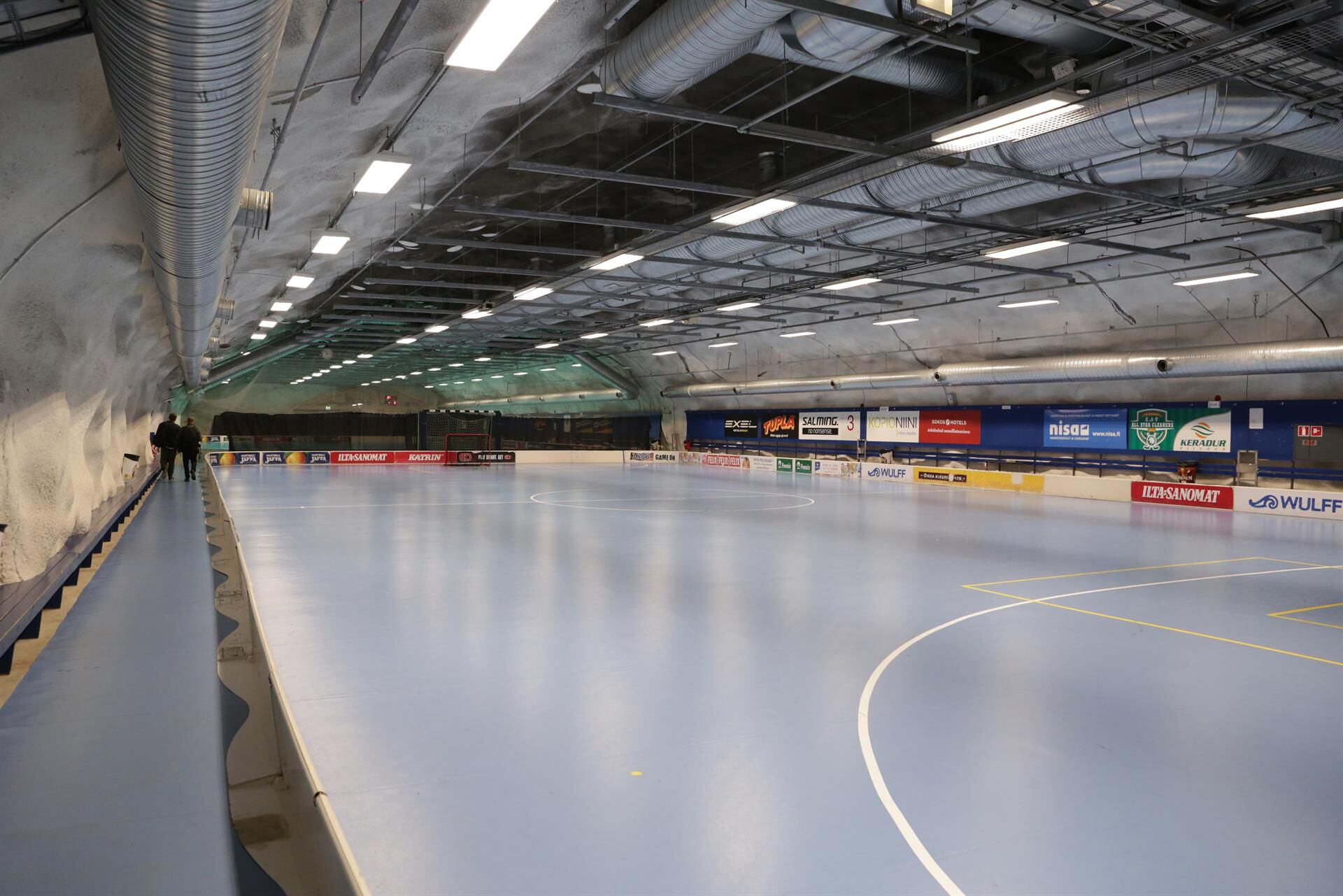The possible entry of Finland on the NATO and the threats of Russia To avoid it, they fear the outbreak of a conflict similar to the one in Ukraine, but in the Nordic country, with its massive network of anti-aircraft shelters and its strategic reserves of supplies, they feel prepared to face it.
Since World War II Finland has built about 54,000 civil defense shelters in the most populated urban centers, where a total of 4.4 million people can be sheltered -80% of the current population-.
LOOK: How the war in Ukraine has made more people in Finland and Sweden want to join NATO
Next to the central square of Hakaniemi of Helsinkiexcavated in the granite subsoil 25 meters deep, hides one of the most modern: the Merihaka civil refuge.
Opened in 2003, this huge 14,750 square meter bunker With a capacity to accommodate 6,000 people, in times of peace it houses an underground car park and a sports center with a cafeteria, a gym, several floorball courts and a children’s playground.
Like other air-raid shelters, in the event of an armed conflict, it can be refurbished in less than 72 hours to protect the civilian population, as required by Finnish law.
LOOK: Russia warns Sweden and Finland against joining NATO
“We are in a state-of-the-art shelter built on bedrock and that means it can contain the impact of conventional weapons and even, to a certain extent, nuclear”explains to Efe Kimmo Kohvakka, general director of the rescue services of the Ministry of the Interior.
The shelter also has filtering systems for radioactive particles and harmful substances, such as those used in chemical and biological weapons, which makes it, says Kohvakka, a “very, very safe” place.
THE UNCOMFORTABLE NEIGHBOR TO THE EAST
According to Kohvakka, the Russian invasion of Ukraine has caused concern among the Finns about the possibility of something similar happening in Finland, with which Russia shares 1,340 kilometers of border, although he trusts the high level of preparation of the Nordic country.
“Certainly there has been an increase in concern, it is obvious that the Finnish population has reacted to the situation. But on the other hand we’re pretty confident that, in our case, we’re prepared for whatever happens,” he says.
Kohvakka admits that the two late-Soviet wars between 1939 and 1944 were “one of the main reasons” why Finland, almost eight decades later, continues to maintain a comprehensive vision of its defense capacity and resilience to any threat, in which it is the whole society involved.
Jani Pitkänen, commander of the Helsinki rescue services, agrees with him and says that “because of our history, civil defense and preparedness are part of our nature.”
“In Helsinki, with a population of 650,000, there are about 5,500 shelters with a capacity of 900,000 people, so we have space for all the residents plus people who are passing through,” explains Pitkänen.

Such a proliferation of bunkers is due to the fact that Finnish legislation requires the inclusion of a shelter in all newly built residential or office buildings and complexes with a floor area greater than 1,200 square metres.
As a result, around 85% of available shelters are privately owned and are often used for other purposes, such as parking, storage or recreational facilities.
STRATEGIC RESERVES AND DEFENSE
The painful experience of the Soviet invasion in 1939 taught the Finnish people the importance of having supplies available to deal with any eventuality, be it war, natural disaster or pandemic.
Since then, Finland has constantly maintained strategic reserves of products considered essential, including fuel, medicines, masks, cereals, seeds and non-perishable food, which cover the needs for several months.
In addition to these reserves, which are stored by the manufacturing companies themselves following instructions from the authorities, security of supply includes the protection of critical infrastructure, such as the electricity grid, drinking water and telecommunications connections.
The high military capacity is the link that completes the so-called “comprehensive security strategy” of the Nordic country.
Finland has always maintained compulsory military service and its Armed Forces have 280,000 troops for wartime and about 900,000 reservists, that is, more than a third of the adult male population.
Its planned military spending for 2022 is 5.1 billion euros, equivalent to 1.96% of its Gross Domestic Product (GDP), which is close to the 2% target set by NATO for its member countries.
own NATOthrough its secretary general, Jens Stoltenberg, has ensured that Finland meets all the military requirements to immediately join the Alliance if it so wishes.
Two months before Russia invaded Ukraine, Finland closed a deal valued at 8.378 million euros to acquire 64 F35-A fighters, combat missiles and ancillary equipment from US manufacturer Lockheed Martin, in the largest defense transaction in its history.
Source: Elcomercio

:quality(75)/cloudfront-us-east-1.images.arcpublishing.com/elcomercio/2B5NAFCQHVF57C5Q3Q6CXGFWIU.jpg)

:quality(75)/cloudfront-us-east-1.images.arcpublishing.com/elcomercio/PQIAMHKCYFH3FCE7XOGKDAAWJY.jpg)
:quality(75)/cloudfront-us-east-1.images.arcpublishing.com/elcomercio/X6CNEVPPV5G5NJDR5KKNAGN7EA.jpg)


